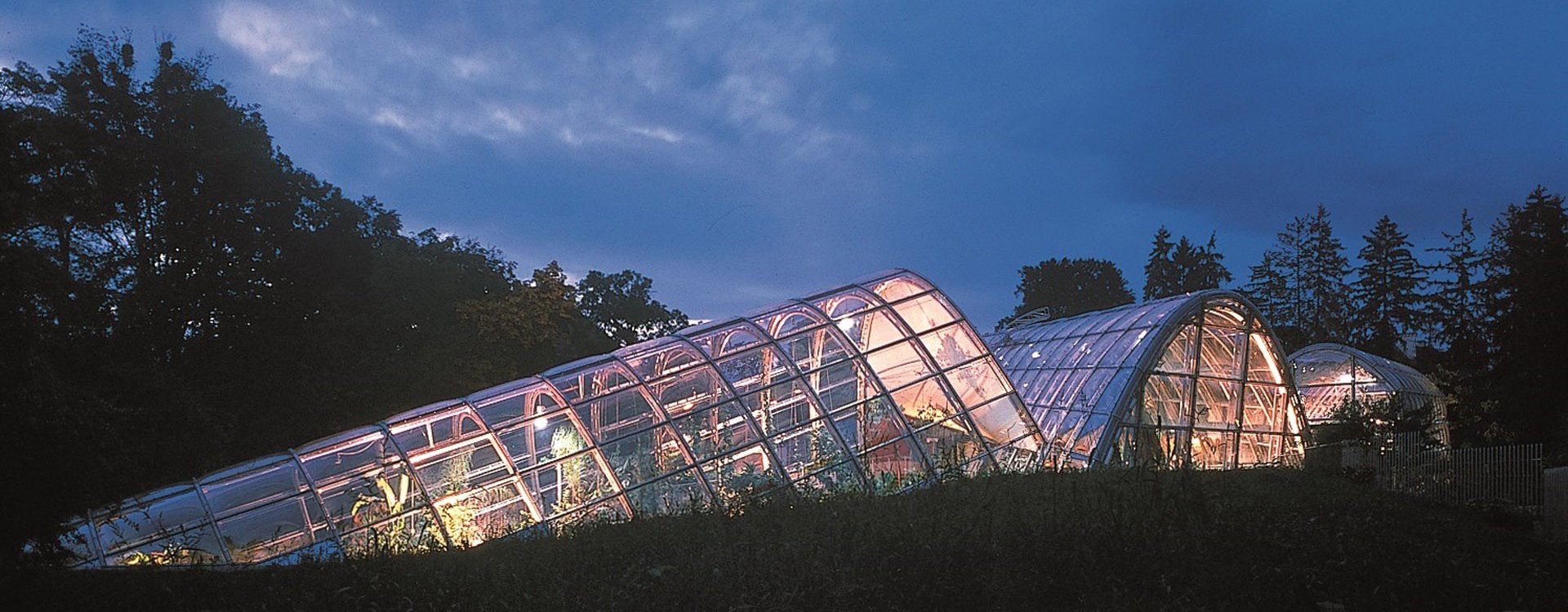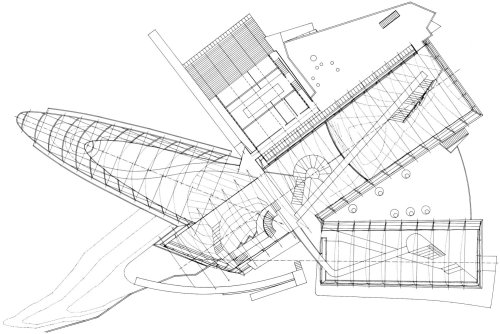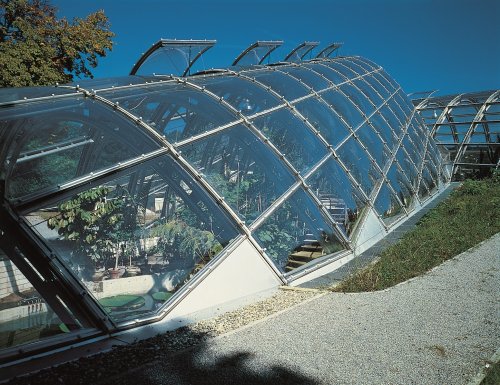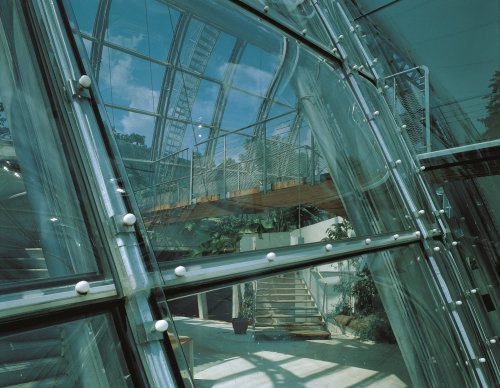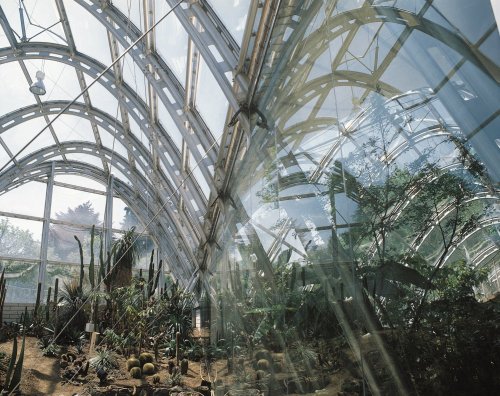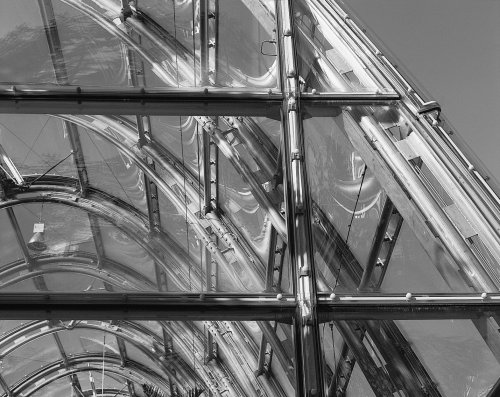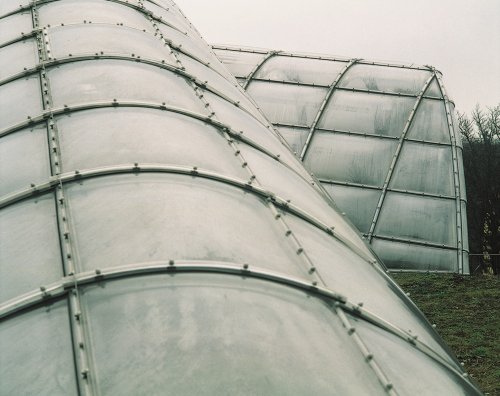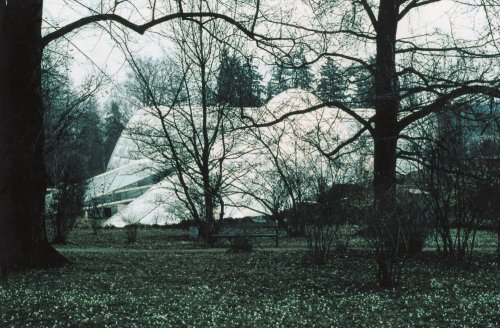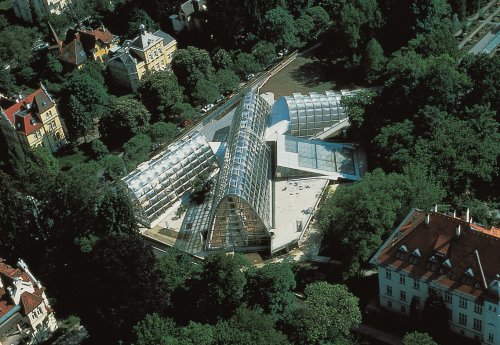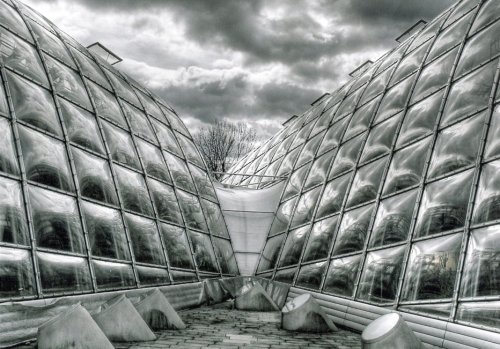Glass Houses for the Botanical Garden
1982-95
1982 Competition 1st Prize
"Greenhouse history is a history of the dialectics of constructive risk, spatial invention and staged intercourse with nature, an image displaying a cultural synthesis of interests in research, in looking, in enjoying the exotic and the charms of diverse natural and artificial forms.
The networks of artificial construction seem to paraphrase space, with oscillating bounds, charging surfaces, laminations, superimpositions, intensities and resultant, continuous changes depending on observers' movements. These networks, filigree tissues, thereby appear to compete with the plants themselves which in turn have perhaps aroused such sensual frenzy with their structures, colors and fragrances.
As a constructive skeleton, Volker Giencke chose the parabolic arch, the caterary curve known to represent the closest approximation to a natural static form. For reasons of economical engineering, the same arch is put to use as an element in all three houses - with the exception of a fragmentation along the street. The difference between the tropical or warm house, the cold house and the moderate-temperature unit thus lies in the sections of resulting parabolic cylinders and their corresponding - inclined - position to the ground. In turn, these volumes depend on the sizes of plants, i.e. they are subject to quite concrete formal commitments. An absolutely novel, fascinating spatial situation, actually based on a strict geometry and the "semimaterial" appearance of an aluminum construction, is created through the volumes' concentric penetration or tangential contact.
Since the arch-plus-tube construction at once serves to discharge water (it is constructed as a heating facility), a "natural" conflict is generated between its application as a construction and a tool. The architectural concept of a larger distance between the tubes fell a victim of the authorities' contract administration, so that observers are left alone with the visual limitations of high technology. As a consolation for the architect, however, this circumstance is also to be seen as breaking fresh ground for visual habits, under the new conditions of such materials as aluminum and acrylic glass. In short, the large surfaces, the tendency to visually "volatilize" aluminum, call for a certain optical resistance on the part of the skeleton. New greenhouses are sites of research and sensual conception, of rational encounters with nature or of unsuspecting perceptions of its selective beauty, serving to encounter art, but also to transpose into art.
Friedrich Achleitner
